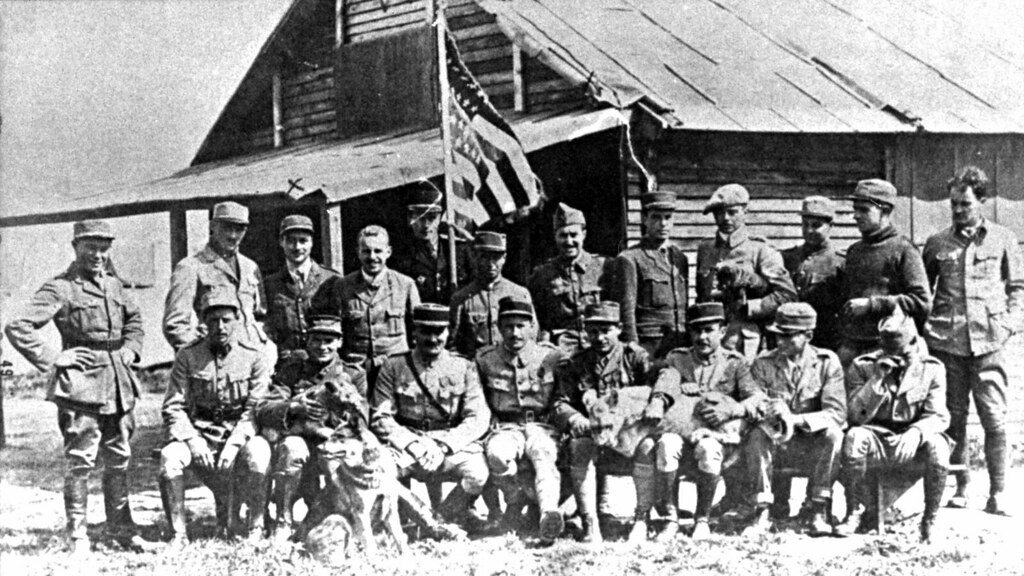
The Escadrille Lafayette was a squadron of the French Air Service, the Aéronautique militaire, during World War I composed largely of American volunteer pilots flying fighters. The squadron was formed in April 1916 as the Escadrille américaine (number 124) in Luxeuil prior to U.S. entry into the war. Dr. Edmund L. Gros, director of the American Ambulance Service, and Norman Prince, an American expatriate already flying for France, led the efforts to persuade the French government of the value of a volunteer American air unit fighting for France. The aim was to have their efforts recognized by the American public and thus, it was hoped, the resulting publicity would rouse interest in abandoning neutrality and joining the fight. Not all American pilots were in this squadron; other American pilots fought for France as part of the Lafayette Flying Corps.

SPAD VII. Visible in the background is the Wright Brothers 1916 Wind Tunnel.
The famed American volunteers of the French Escadrille Lafayette were flying the SPAD VII in February 1918 at the time they transferred to the U.S. Army Air Service, becoming the 103rd Aero Squadron. Several other U.S. units also used the SPAD VII, although most American Expeditionary Force (AEF) fighter squadrons were equipped with a slightly improved version, the SPAD XIII, by the time the war ended in November 1918. The SPAD VII made its initial flight in July 1916. It showed such promise that it was put into production at once, and by the latter part of that year it appeared on the Front in both French and British squadrons. The airplane was an immediate success, primarily because its structural ruggedness permitted it to dive at high speeds without disintegrating. About 189 of the slightly more than 5,000 SPAD VIIs built went to the AEF.

No comments:
Post a Comment